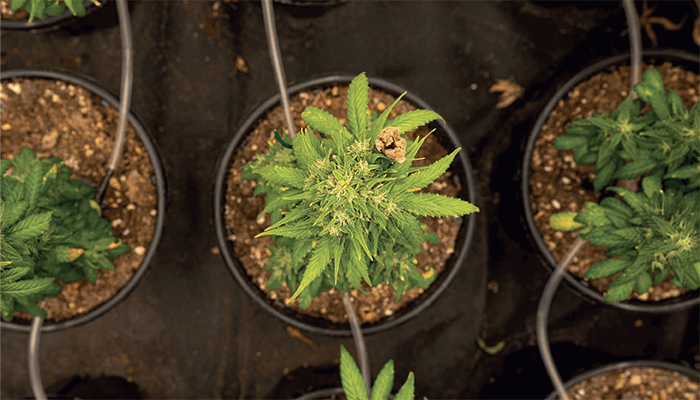As cannabis legalization becomes increasingly common, there is growing concern over its environmental impact, particularly in indoor cultivation settings. In an effort to explore these effects, researchers from the Colorado Department of Public Health and Environment (CDPHE) examined air quality samples from three indoor cultivation facilities in Colorado (1). Despite these facilities’ high nuisance odors, they found the volatile organic compounds (VOCs) emissions rate to be low – even at large cultivation facilities. We spoke with the paper’s first author, Kaitlin Urso, to find out more.
What inspired this research?
In 2010, Colorado legalized medical marijuana stores and in 2014, recreational marijuana became legal to purchase. Since 2010 there has been a significant increase in the number of cannabis cultivation facilities in Colorado – there are now over 1,450. This prompted us to look into the effects of these facilities on air quality.
Prior to this study, there was very limited research on the air quality impacts of growing large quantities of cannabis in major metropolitan areas. But the studies that had been done showed that cannabis cultivations emit VOCs, which react with nitrogen oxides (NOx) emissions (mostly from cars or oil and gas activities) in the presence of sunlight to form ground-level ozone. Breathing ozone can negatively impact health in a variety of ways and damage sensitive vegetation and ecosystems in the environment.
Therefore, we pursued a sampling study to quantify the amount and type of VOCs emitted from growing cannabis commercially to establish a VOC emission factor for the industry (lbs/plant/day). The emission factor was used in combination with plant count data from the Colorado Department of Revenue to better understand the impact that cannabis cultivation facilities have on ozone formation – especially within our nonattainment area.
Could you tell me about your method?
It was pretty simple. We collected samples from four commercial cannabis cultivations (varying by size and cultivation method) at their heating, ventilation, and air conditioning (HVAC) exhaust points to quantify the type and amount of VOC emissions. Photoionization detectors (PIDs) were first used to establish trends, sampling times, and flow rates based on observed total VOC concentrations. Then Tenex Tube samples were collected at optimal sampling times, which we identified through PID data to get speciated concentrations. The tube results were then used to inform modeling impacts of ozone and particulate matter (PM).
What were your main findings?
Despite cannabis cultivation facilities’ high nuisance odors, we found the VOC emissions rate from the sampled indoor facilities to be low (2.13 lbs to 11.12 lbs of VOC/ton of cannabis harvested), even at large production facilities. The dominant terpenes from this sampling study were β-caryophyllene, D-limonene, terpinolene, α-pinene, β-pinene and β-myrcene respectively by concentration. Interestingly, the cannabis emissions exhaust profile lacked isoprene, a terpene commonly emitted from other plants that is highly reactive and has high potential to contribute to ozone formation. The low biogenic VOC emissions rate and the lack of isoprene from the cannabis cultivation facilities sampled resulted in a very low to negligible impact on both ozone formation (0.005 percent - 0.009 percent increase in ozone from cannabis cultivation) and PM2.5 formation (largest maximum 24-hour PM2.5 difference of 0.009 µg/m3) in the Denver Metro North Front Range Ozone Nonattainment Area.
Were any of these findings surprising?
With the high levels of odor, we expected to find more significant VOC emissions. Essentially, the study taught us that cannabis odors are a nuisance, but not a public health concern or environmental threat.
Do you have any plans for future studies in this area?
Later this year, we will publish the second half of this study that was focused on VOC concentrations observed within the cultivation facilities (as oppose to at the HVAC exhaust points).

References
- Urso et al., J. Air Waste Manag. Assoc. (2022). DOI: 10.1080/10962247.2022.2046206




